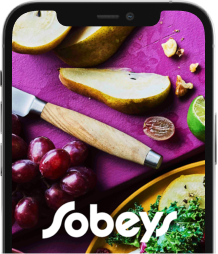They’re fast, fresh and flavourful, so why not whip up a quick pickle? It’s a delicious shortcut that skips traditional canning practices and makes the most of harvest vegetables while they’re still around.
Pickling is a simple method of preserving the flavours of the season and a great way to experiment with large bunches of fresh produce. Quick pickles are ready to enjoy within hours of being doused with briny goodness and can be customized with your favourite produce and ingredients – take the spice higher if you like the heat! Here are some tips for getting yourself into a pickle – in the most delicious of ways.
Safety tips
Quick pickles are typically made in small batches and stored in the refrigerator for up to a week, so there’s no need to sterilize and vacuum-seal jars to keep out mould and bacteria. Just be sure to use clean jars and to wash your produce well. For more information on traditional canning, click here.
How to quick pickle
Since the whole idea is speed, there’s not much prep needed here. Make sure vegetables and fruit are clean and chopped or sliced uniformly. A good rule of thumb: If you like to eat your chosen produce raw, then use it as is. More dense vegetables (asparagus, beets and cauliflower) could be steamed or blanched beforehand – dropped into boiling water for a few minutes and then plunged into an ice bath – to preserve colour and texture. Pack the produce into clean glass jars with airtight lids, pour in the brine and store in the fridge. Quick pickles are ready to eat in as little as three hours and are best enjoyed within a week.
If you’re feeling adventurous, try pickling fruit – no, really! Think of pickled fruit as a fresh chutney. Pickled peaches, cherries or grapes pair wonderfully with meat dishes, sandwiches and salads, and make a surprising addition to wine and cheese night.
About the brine
A basic brine typically calls for vinegar, water, salt and sugar, but don’t worry – you can have a lot of fun with these basic ingredients. Different kinds of vinegar will impart different flavours – white is simplest, but there’s also cider, wine or rice vinegar. Ratios of salt and sugar can be adjusted depending on how sweet or savoury you like your pickle. And then there are the spices and herbs: peppercorns, red pepper flakes, cinnamon sticks, garlic cloves, fresh dill, rosemary and mustard or cumin seeds are all tasty choices.
Add them to everything
Besides digging into the jar at the kitchen counter, there are countless other ways to enjoy your pickles. Crisp, zingy red onion and radish are a perfect complement to pulled pork sandwiches, tacos and creamy salads. Quick pickled grapes freshen up fruit salad, cheese plates and roasts, and dilled beets are a beautiful addition to hearty grain salads and burgers.
Get started with two easy ideas:
Pickled Grapes - Sweet, sour, a bit spicy and totally unexpected, these crisp grapes perk up fruit salad, cheese plates and roasts.
- Rinse grapes and place in a clean jar with a sprig of fresh rosemary.
- In a pot, combine apple cider vinegar (enough to cover the grapes in the jar, 1 to 2 cups), sugar and hot pepper flakes to taste. Simmer until sugar is dissolved.
- Pour the warm vinegar mixture over the grapes and cool completely.
- Screw lids on tightly and chill.
Pickled Beets - Slice these classic ruby beauties into hearty grain salads and sandwiches.
- Slice cooked and peeled beets and place them in a clean jar with frond of fresh dill and red chilies if you like a little heat.
- In a pot, combine enough vinegar to cover the beets (1 to 2 cups of white or apple cider vinegar), brown sugar and whole cloves. Simmer until sugar is dissolved.
- Pour the warm vinegar mixture over the beets and cool completely.
- Screw lids on tightly and chill.





